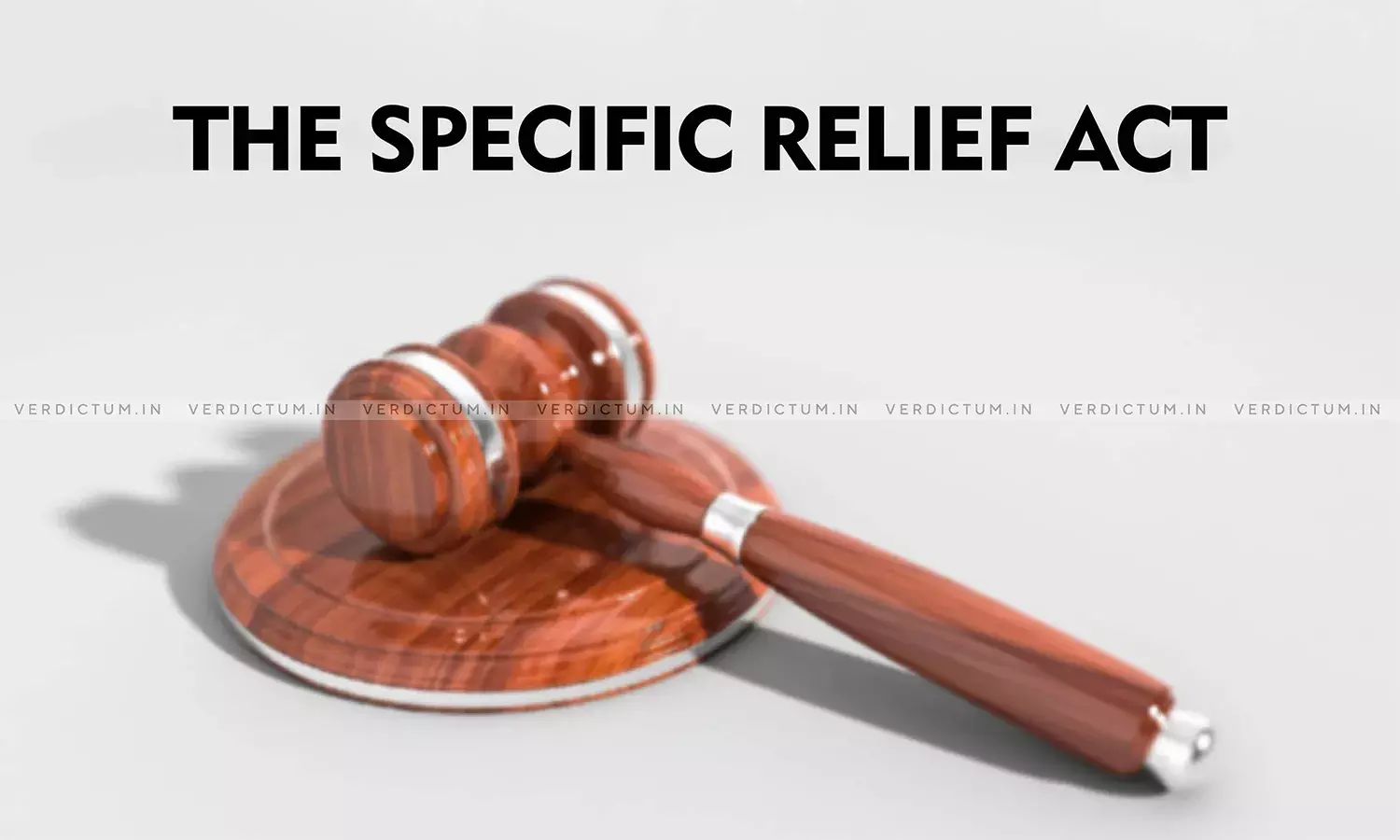Column | Further Relief Under The Specific Relief Act
A peek into the history of the Specific Relief Act, 1963 would be apposite before proceeding to examine section 34 of the Act. The Act is a legislation derived originally from the equity jurisdiction in England and came into force from 1st March 1964. Specific Relief in a historical sense, was a relief given in equity given by the Court of Chancery in English. Hence the Act has the colonial influence of equity principles which was followed by the English courts. Prior to the enactment of the Specific Relief Act, 1963, the provisions of the Specific Relief Act, 1877 governed the field[1]. Section 42 of the 1877 Act is pari materia with the present section 34 of the 1963 Act.
In the legal realm, clarity is of utmost importance. Generally, disputes arise due to uncertainty surrounding the rights of the parties and Section 34 of the Specific Relief Act, 1963 addresses this very issue. If an individual is denied any right with respect to a property or any legal character which he/she was entitled to this relief can be availed through seeking a declaration from the court by filing a suit under Section 34 of the Act.
Discretionary Relief
Section 34 of the Specific Relief Act provides that the discretion of the court as to the declaration of the status or the right shall not be made where the plaintiff being able to seek for further relief omits to do so. The object of section 34 of the Act is to avoid multiple litigations in relation to the same subject matter and to compel the plaintiff to seek all reliefs in one comprehensive suit. The Apex court while considering Section 42 of the 1877 enactment, held that a mere suit for declaration in the absence of the relief of possession is barred by Section 42[2]. Following the said judgment, the apex court in the case of Ibrahim Uddin[3], held that in the absence of consequential reliefs being omitted by the plaintiff, the plaintiff would not be entitled for a declaration of a status or a right in view of Section 34 of the 1963 Act. This position of law was reiterated in Venkatraja’s case[4]. Hence the position of law on the said subject was fairly settled.
Akkamma's Case
In Akkamma’s case[5] the Apex court took a different view and decreed the suit granting declaration of title although the plaintiff was not in possession of the property. The facts of the aforesaid case was that the plaintiff instituted the suit seeking declaration of ownership of a certain immovable property and for permanent injunction directing the defendants to not interfere with the peaceful possession and enjoyment of the property. The Trial Court had dismissed the Original Suit on the ground that the plaintiff had claimed mere declaration without a relief of possession. The High Court confirmed the Judgement and decree of the trial court. Before the Apex Court, it was submitted that the claim of declaration was followed by an injunctive relief and once the ownership is proved, there must be a presumption of possession. The Apex court held that in a suit where the consequential relief of injunction is sought for but the court comes to a conclusion that if the plaintiff is not in the possession of the property, the suit cannot be dismissed on the ground of maintainability. The court held that when consequential relief in the form of injunction is sought for the same would insulate the suit from the attack of maintainability.
Conflict of Decisions
The aforesaid decision of the Apex court is in conflict with the decision of the Apex court in Venkatraja’s case and Ibrahimuddin’s case referred to above. Interestingly all the three judgments were by a two-judge bench. However, the judgment of the Apex court in Ram Saran’s case was by a three Judge Bench. Therefore, the law declared by the apex court in Ram Saran’s case as followed in the case of Venkatraja and Ibrahimuddin would continue to hold the field. In fact the judgment of the Apex court in Akkamma’s case does not take into account the following aspects :
- Permitting a person who is not in possession of the property to file a fresh suit seeking for possession of the property would result in multiplicity of suits which is against the letter and spirit of Section 34 of the Act and Order 2 Rule 2 of CPC.
- Whether a fresh suit would be barred by Res Judicata?
- Is a bare decree of declaration of title executable in law?
- Can the relief of Permanent Injunction be construed as further relief when the plaintiff is not in possession of the property?
Further Relief
It does not require any elaboration that as per section 34 of the Act the court cannot grant a decree by exercising its discretion when the plaintiff has failed to seek further relief. The phrase “further relief” found in proviso to Section 34 cannot but be construed as appropriate relief consequential to the declaration of right or title, failing which the very purpose and object of Section 34 would be defeated. The phrase “further relief” was considered by the Apex court in the Executive officers’ case[6] wherein the plaintiff has sought for declaration and mandatory injunction. The court held that the plaintiff being out of possession, the relief that ought to have been sought for was the relief of recovery of possession without which the suit is not maintainable. There can be iota of doubt that “further relief” should necessarily mean the relief which is appropriate and consequential to the main relief.
Conclusion
Therefore the decision of the Apex court in Akkamma’s case requires reconsideration. The declaration of law in Ram Saran’s case would continue to hold the field and a suit filed without seeking consequential relief would not be maintainable in view of Section 34 of the Act.












